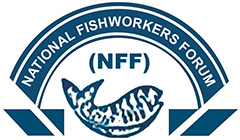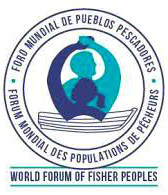Reg. No.: 487/85
Loading site...
Enquire? Send Your Mail
Our History
A Timeline of NFF’s Engagement in
Policy and Advocacy for
Fishworkers’ in India:

1981-88:
- On the 27th November, 1981 PM Indira Gandhi writes to the state and union territories authorities expressing concern on the degradation of India’s beaches and urges them to give thought to the matter to ensure that India’s coastline and its beaches remain unsullied.
- A Working Group is constituted in 1982 to act on this letter.- In July 1983, the Department of Environment (which later became the Ministry of Environment & Forests) frames the "Environmental Guidelines for Development of Beaches".
- In March 1984, a set of guidelines for development of beaches are circulated to all states and Union Territories.
- The National Fishworkers Forum (NFF) registers under the Trade Union Act of India in 1985.
- The Environment Protection Act is passed in 1986.
- A progressive and environmental set of Environmental guidelines for locating industries, thermal plants, hotels and public sector projects is developed.
1989:
- In March 1989, the NFF organizes a coastal yatra of around 25,000 NFF members, one of the first steps by the fishing community demanding a set of laws to protect the coastal areas of India. With the slogan to "Protect Water, Protect Life", one group marched from West Bengal to Kanyakumari, Tamil Nadu and another group from Kutch, Gujarat to Kanyakumari. While the ‘Kanyakumari March’ culminates at Kanyakumari with bullets being fired at and injuring 21 fishworkers, it brings the issues of coastal conservation and the relationship of natural resources to traditional communities to national attention. This in turn gives momentum to the movement to protect India’s coasts via a specific legislation.
1990:
- The MoEF carries out an in-house consultation and issues a draft Coastal Regulation Zone (CRZ) Notification twice inviting suggestions and objections from public on 27th July, 1990 and 15th December, 1990.
1991:
- On 19th February, the MoEF issues the Coastal Regulation Zone 1991 notification under the Environmental Protection Act, 1986.
1996:
- In December 1996 the SC orders all the state governments to submit a Coastal Zone Management Plan (CZMP) based on the CRZ Notification, 1991 and asks the coastal states to implement the CRZ notification. This judgement also paves the way for the formation of Coastal Zone Management Authorities (CZMA) at the national and state level.
1998:
- The NFF commissions a survey in 1998 to map the CRZ violations along the east and west coast.
2005-2007:
- Until 2005, the CRZ notification 1991 gets amended twenty-one times, with each amendment diluting the protection the notification offered.
- Post the tsunami in 2004, the coastal areas of India undergo widespread destruction and a renewed attempt was made to review the CRZ notification. The MoEF sets up an Expert Committee under the chairmanship of Prof.M.S. Swaminathan to review the CRZ notification, including the amendments.
- Members of NFF, environmentalists and civil society organisations begin to agitate against the recommendations of the M. S. Swaminathan Committee to replace the CRZ 1991 by a Coastal Management Zone Notification. This is done on grounds of the absence of participatory planning, lack of consent and the capture of regulatory process. 8- Between 2005 and 2006 several mass protests are organised along with petitions and letters of protest.
- Responding to a leaked draft of CZM, fresh waves of protests begin. The National Coastal Protection Campaign (NCPC) is formed to bring all the concerned organizations together under one umbrella.
- The 'National Campaign against CZM Notification' is launched on the 9th August, 2007 to coincide with the anniversary of the Quit India Movement.
- The NFF launched another massive protest on 21st November 2007, the World Fisheries Day.
2008-2011:
- On 1st May, 2008 the NFF launches the 'Machhimar Adhikar Rashtriya Abhiyan' (National Campaign for Fisherworkers' Rights) with the motto "Save the Coast, Save the Fishers".
- The campaign is conducted along all the coastal states and union territories on mainland India.- The CZM, 2008 is made available to the public against which there is wide spread opposition. The draft Notification is rejected by fisherfolk' organisations as well as environmental NGOs.
- Between 2009 and 2011, a series of exchanges were conducted between the MoEF and the fishing communities, along with an active campaigning by the National Fishworkers Forum and allied groups. (See Part 3 of NFF's submission to the MoEFCC for details on this engagement).
2011:
- On the 7th January, the Coastal Regulation Zone Notification, 2011 is issued under the Environmental Protection Act, 1986. This notification supersedes the CRZ 91, as well as codifies all twenty-five amendments made to it.
- CRZ 2011 mandates the preparation of a new Coastal Zone Management Plan and issues guidelines for preparation of the plan.
- For the first time, the CRZ 2011 recogonises fisher people's rights over coastal commons on land and sea/river and asks for the demarcation of 9 land use and community infrastructure on the CZMP, so those uses can be prioritised.
- CRZ 2011 also takes into account the widespread degradation of the coast after the tsunami and introduces the addition of a Hazard Line, regulating development within areas vulnerable to hazards due to climate change and sea level rise.
2013:
- Coastal Zone Management Plans are introduced under the CRZ 2011 and released for public comments. In some states, like Tamil Nadu, the plans did not follow the guidelines and were incomplete and inaccurate. Fishworker protests led to the withdrawal of the plans.
2014:
- The Shailesh Nayak Committee is formed to review the CRZ 2011 notification.
2016:
- The Shailesh Nayak Committee submits its recommendations. The Shailesh Nayak Committee does not meet any representatives of the fishworking communities, the largest non-consumptive stakeholder of India's coastline.
- CZMP not finalized even six years after notification of CRZ 2011. However, notification amended over ten times to dilute existing protections.
2017:
- The MoEFCC releases the draft Marine Coastal Regulation Zone, 2017 notification internally, but never in the public domain.
- On the 22nd November the National Green Tribunal passes an order directing that all states must file the draft of their CZMPs under CRZ, 2011 by 30th April, 2018. In addition, it directs the MoEFCC to approve the Hazard Line marking and the CZMPs by the 31st July, 2018. It also directs that the MoEFCC not grant any Environmental Clearances for 10 development activity within the CRZ areas until the updated CZMPs are prepared.
2018:
- MoEFCC releases new CZMP under CRZ 2011 prepared using High Tide Line (HTL) by National Centre for Sustainable Coastal Management for states like Tamil Nadu, Karnataka, Maharashtra, Gujarat, etc. Maps remain incomplete and fall short of guidelines issued by the notification. Public hearings are met with large protests.
- On the 18th April, the MoEFCC publishes Draft Coastal Regulation Zone, 2018 notification for comments. This relaxed all restrictions on setting up "Strategic", "Defence" and "Public Utility" projects on ecologically sensitive areas and reduced the Hazard Line to being a tool in city/ town planning rather than a determinant set-back line.
- On the 21st May, the NFF organises a national consultation on the Draft CRZ 2018 notification.
- On the 11th June, the NFF observes a National Day of Protest against the Draft CRZ 2018 notification with the slogan: "Restore our coastline, secure our livelihoods".
- On the 2nd July, the MoEFCC amends the CRZ 2011 for the sixteenth time. This amendment removes all administrative powers of the Hazard Line, as well as opens up the eco-sensitive areas of the CRZ to projects related to defence organisations.

